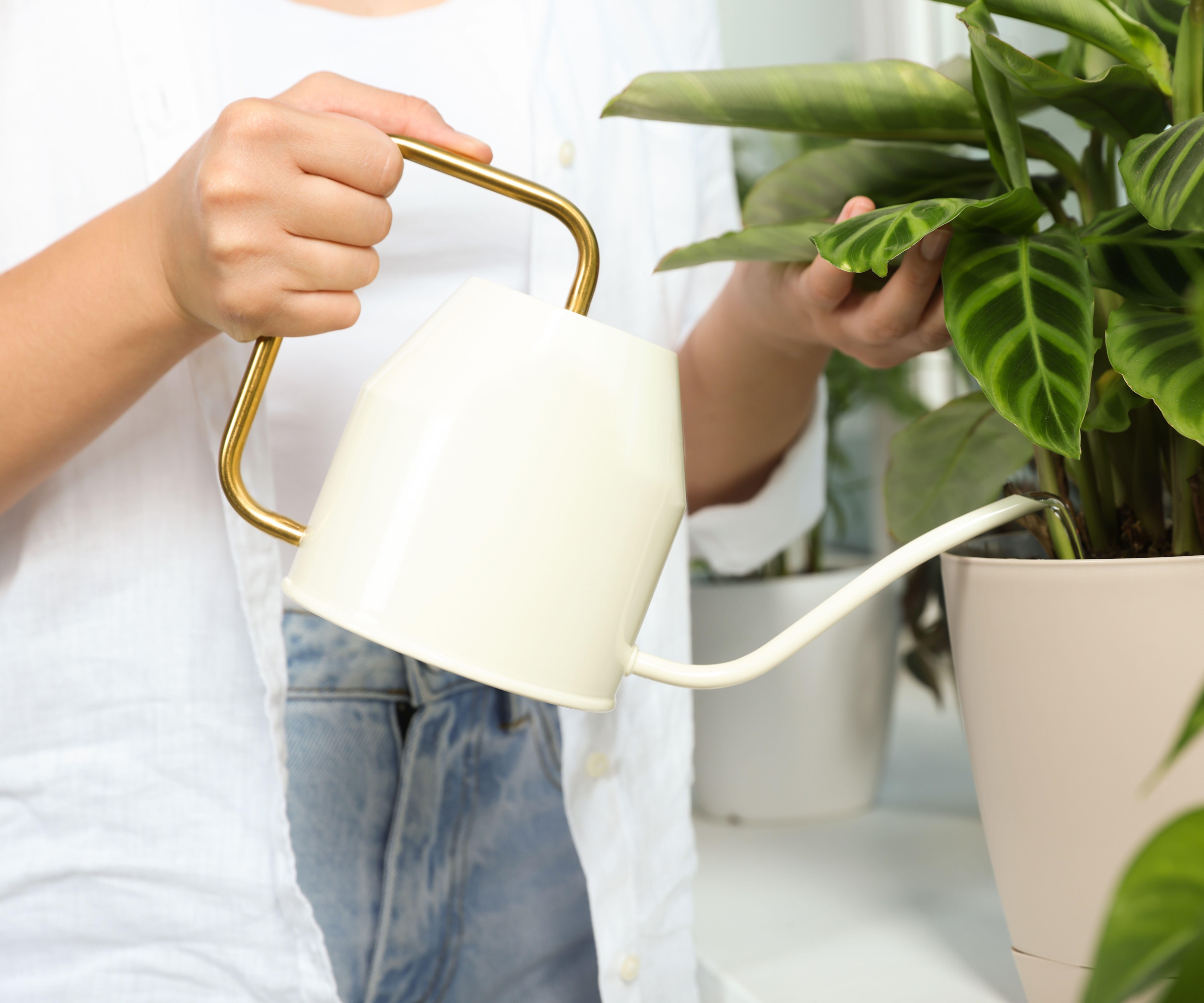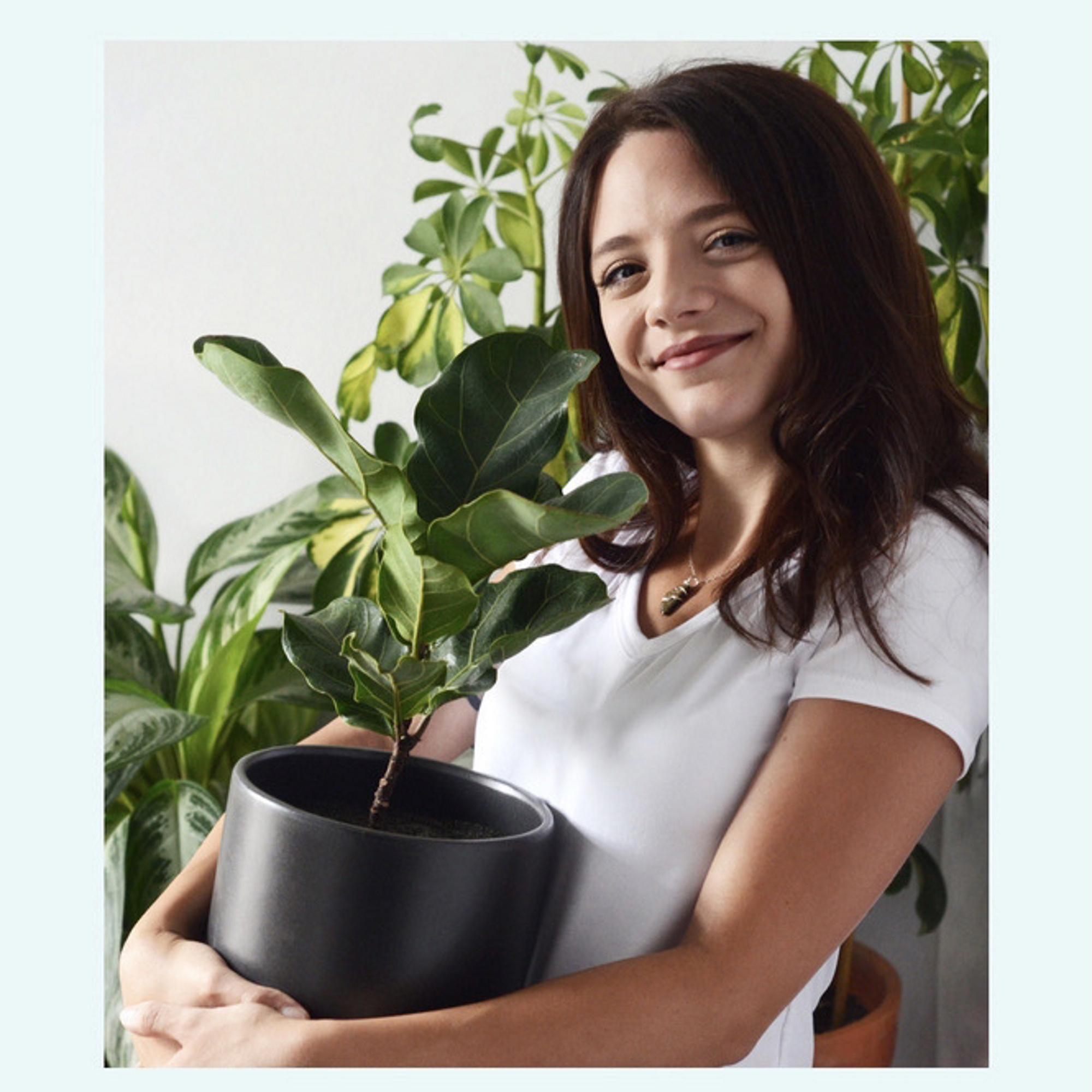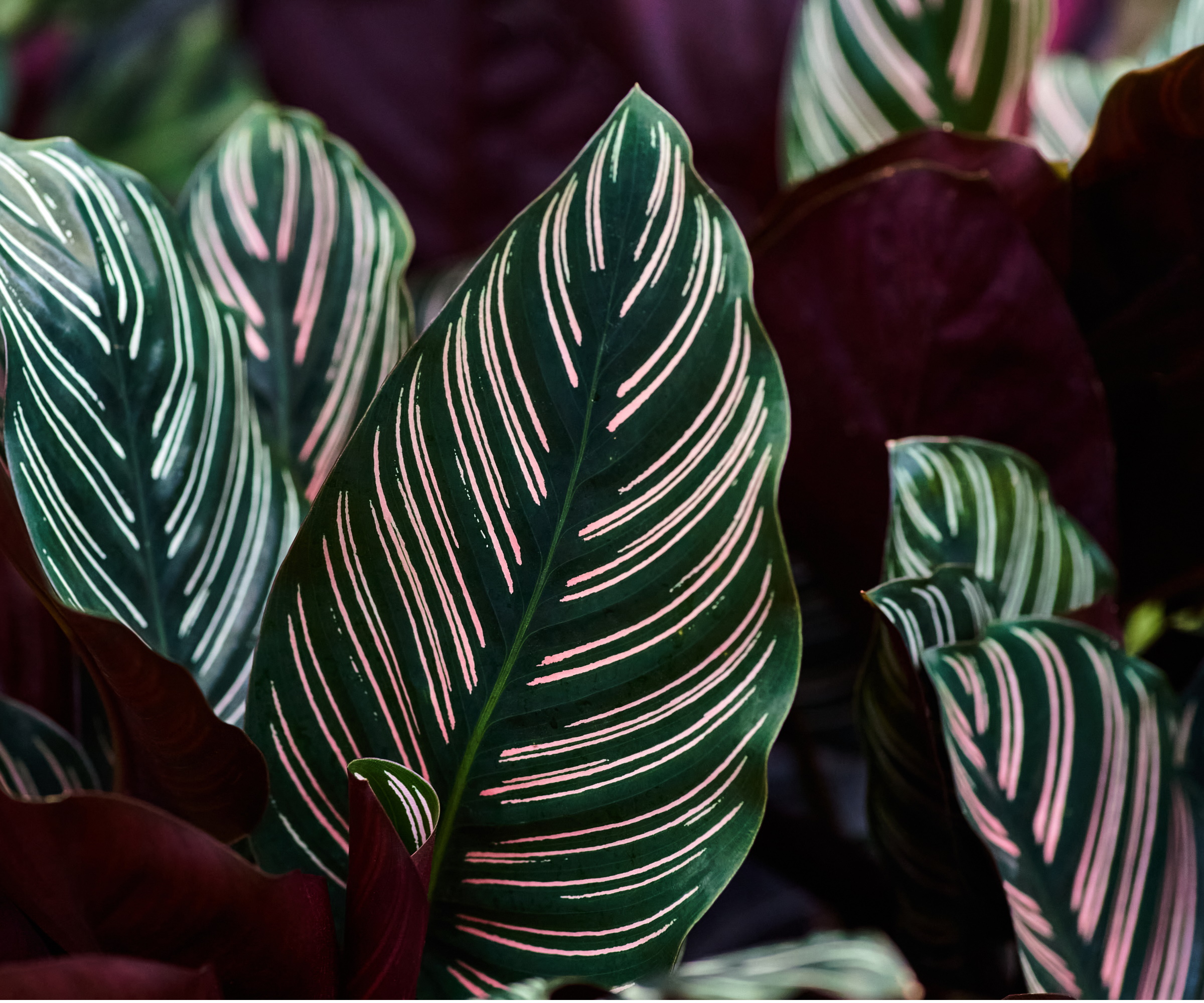Common calathea mistakes – experts reveal the 4 errors that can damage this demanding houseplant
These fussy indoor plants can be tricky to keep happy


Any plant parent who owns a calathea will know that they aren't easy indoor plants. They require some extra attention to keep happy, otherwise you may find their leaves curl or crisp up.
However, that doesn't mean you shouldn't bother trying to keep one of these beautiful plants. There are so many varieties of calatheas with lots of gorgeous colors and patterns to choose from. They're also known as prayer plants because their lovely foliage stands up and opens up with daylight, mimicking praying hands.
It can be disheartening to see this striking foliage decline in appearance, but don't fret. We've spoken with experts to find out what the most common calathea mistakes are so you can help keep your calathea happy for years.
4 common calathea mistakes
Calatheas can be tricky to care for and it's not uncommon to watch their foliage discolor, crisp or curl. But it isn't time to give up - we've spoken to experts to find out what common errors cause calatheas to fail, so that you can help yours thrive for longer.
Incorrect watering

It's somewhat of an art knowing how to water calatheas correctly because go slightly under or over the ideal moisture levels and your calathea may have a dramatic reaction with calathea leaves drooping and browning.
How often you should water it will depend on factors such as temperature, so it's always best to check the soil before watering. If around half of the soil is dry, it's a good time to give your calathea a drink. Make sure to not let it dry out entirely.
'When it’s time to water, give the plant a thorough soak to evenly and thoroughly saturate the soil,' says Paris Lalicata, head of plant education and community at The Sill.
Design expertise in your inbox – from inspiring decorating ideas and beautiful celebrity homes to practical gardening advice and shopping round-ups.
This will ensure your calathea soaks up as much moisture it needs. You can likewise use a container with a drainage holes and a saucer, like these ceramic plant pots from Amazon, to allow for excess water to be removed.

Paris has been at The Sill for five years, looking after Plant Education and Community. She is a self-taught plant expert with over ten years of experience growing houseplants and is currently working on becoming a certified sustainable gardener. She maintains an indoor garden of over 200 plants in the north-east of the USA and is passionate about making plant care more digestible for budding plant parents.
Incorrect lighting

You will soon know if your calathea is receiving too much or too little light in its current position because the foliage will start to look worse for wear.
'If a calathea has too much light its leaves will start to fade and lose their vibrant color,' says Vladan Nikolic, houseplant expert and founder of Mr Houseplant. 'Prolonged exposure to direct sunlight can cause leaf burn, which manifests itself as brown or yellow patches on the leaves,' he adds.
In their natural environment, calatheas are found growing low to the ground in central and south American forests where they are protected from direct light by canopies of trees. That's why they do best in bright, indirect light in our homes.
It might be a case of trial and error and moving your calathea to different spots in your house to find where it grows best. Once you've found the ideal place, leave it where it is and it shouldn't complain.

Vladan Nikolic is a houseplant expert with over 10 years of experience. He is the founder of the houseplant care blog Mr. Houseplant and is a social media influencer for houseplants with over 500,000 followers.
Heavy potting mix

Calatheas don't like being oversaturated, so it's important to provide well-draining potting mix.
'The best soil for a calathea is well-draining and porous soil,' says Vladan.
Using heavier soils can risk moisture being trapped in the potting mix, not allowing it to dry. This can lead to root rot and kill off your calathea.
'You can improve drainage and make your own mix by adding large particle amendments, such as perlite or vermiculite, to any store-bought potting mix,' says Vladan.
There are lots of well-draining potting mixes available on the market, like this organic potting mix from Garden Goods Direct.
Not enough humidity

As a tropical plant, calatheas will do best in an environment with higher humidity. Not providing this could cause your calathea foliage to crisp up or curl.
'Calatheas require a consistent level of humidity, preferably anywhere between 40-70% relative humidity,' says Paris.
Many people choose to mist houseplants to increase humidity, like with this mister from Amazon, but there are other effective methods, such as with this humidifier from Amazon.
Paris notes to be careful if you do choose to mist your calathea. 'Misting plants increases the risk of them contracting an infection and can also scar the leaves,' she says.
If you do choose to use a mister, take care not to use it too closely to your calathea's foliage.
FAQs
How can you revive a calathea?
The first thing you need to do when trying to revive your calathea is prune away dead or damaged foliage and roots. Make sure to use clean tools, like pruning shears. You then need to give it optimal growing conditions, including lots of bright, indirect light, consistent moisture and high humidity. It may take some time, but plenty of TLC will nurse your calathea back to health.
Should I fertilize my calathea?
Fertilizing your calathea can help boost growth and keep it healthy.
'If you repot your calathea annually, you don’t have to fertilize it because it will get nutrients from the fresh soil,' says Vladan Nikolic, houseplant expert and founder of Mr Houseplant. 'However, if you want to, you can fertilize your plant once a month with a nitrogen-rich liquid fertilizer when it is actively growing,' he adds.
It's not advised to fertilize calatheas during colder seasons when it's not actively growing as this could oversaturate and rot the roots.
Don't give up on your calathea too quickly if the foliage starts to discolor, crisp or droop. You're likely making one of these common mistakes that can be easily fixed.
Give your calathea optimal conditions and it will thrive happily in your home. If you find other plants in your home are struggling, it's possible that you are making one of these common indoor plant mistakes.

Tenielle is a Gardens Content Editor at Homes & Gardens. She holds a qualification in MA Magazine Journalism and has over six years of journalistic experience. Before coming to Homes & Gardens, Tenielle was in the editorial department at the Royal Horticultural Society and worked on The Garden magazine. As our in-house houseplant expert, Tenielle writes on a range of solutions to houseplant problems, as well as other 'how to' guides, inspiring garden projects, and the latest gardening news. When she isn't writing, Tenielle can be found propagating her ever-growing collection of indoor plants, helping others overcome common houseplant pests and diseases, volunteering at a local gardening club, and attending gardening workshops, like a composting masterclass.